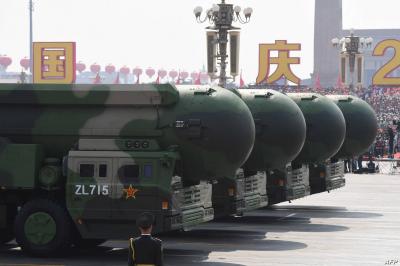General John Hyten, Vice Chairman of the U.S. Joint Chiefs of Staff, told CBS News that the hypersonic missile tested by China "traveled around the Earth." Hyten, the second-highest military official in the United States, expressed concern over China's military efforts, noting that the "long-range missile" was launched at supersonic speeds and hit its target "very closely." He warned about the pace at which the Chinese military is developing its capabilities, indicating that they could one day possess the ability to launch a surprise nuclear attack on the United States.
Hyten questioned, "Why are they building these capabilities? They look like a weapon that is being used for the first time; that's what those weapons look like." Joint Chiefs of Staff Chairman General Mark Milley announced in early November that China's recent test of a hypersonic missile that orbits the Earth resembles the Soviet Union's launch of Sputnik, the world's first artificial satellite in 1957, which sparked the great power space race. Milley stated in an interview with Bloomberg Television that "what we witnessed was a very important event related to the testing of hypersonic weapon systems. This is extremely concerning." He added, "I don’t know if it’s similar to the Sputnik moment, but I think it’s very close to it," and continued, "a highly significant technological event occurred... and we are giving it our full attention."
The Financial Times revealed that the missile launch test in August surprised the United States. According to the newspaper, the missile traveled around the Earth at a low altitude and at five times the speed of sound. Hypersonic missiles represent the new frontier in this technology due to their ability to fly at lower altitudes, making them harder to detect compared to ballistic missiles, their ability to reach targets faster, and their ease of maneuverability. This makes them more dangerous, especially if equipped with nuclear warheads.
China unveiled a medium-range hypersonic missile, the DF-17, in 2019, capable of covering 2,000 kilometers and carrying nuclear warheads. The U.S. Department of Defense warned in early November that China is expanding its nuclear weapons capabilities at a faster rate than expected. A Pentagon report revealed that China "intends to possess at least a thousand nuclear warheads by 2030," exceeding the pace projected by the Defense Department in 2020.
The report also indicates that China is building at least three silos likely to house "hundreds" of new intercontinental ballistic missiles. The Department of Defense noted in its report that "China is investing in and expanding multiple ground, sea, and air nuclear weapon platforms and is establishing the necessary infrastructure to support this significant expansion of its nuclear forces." In a previous report submitted to Congress in September 2020, the U.S. Department of Defense estimated that China has "about 200" nuclear warheads, but anticipated that this number would double over the next decade. With projections of 700 nuclear warheads by 2027 and a thousand by 2030, U.S. military forecasts indicate a very strong acceleration in Beijing's nuclear activities.




